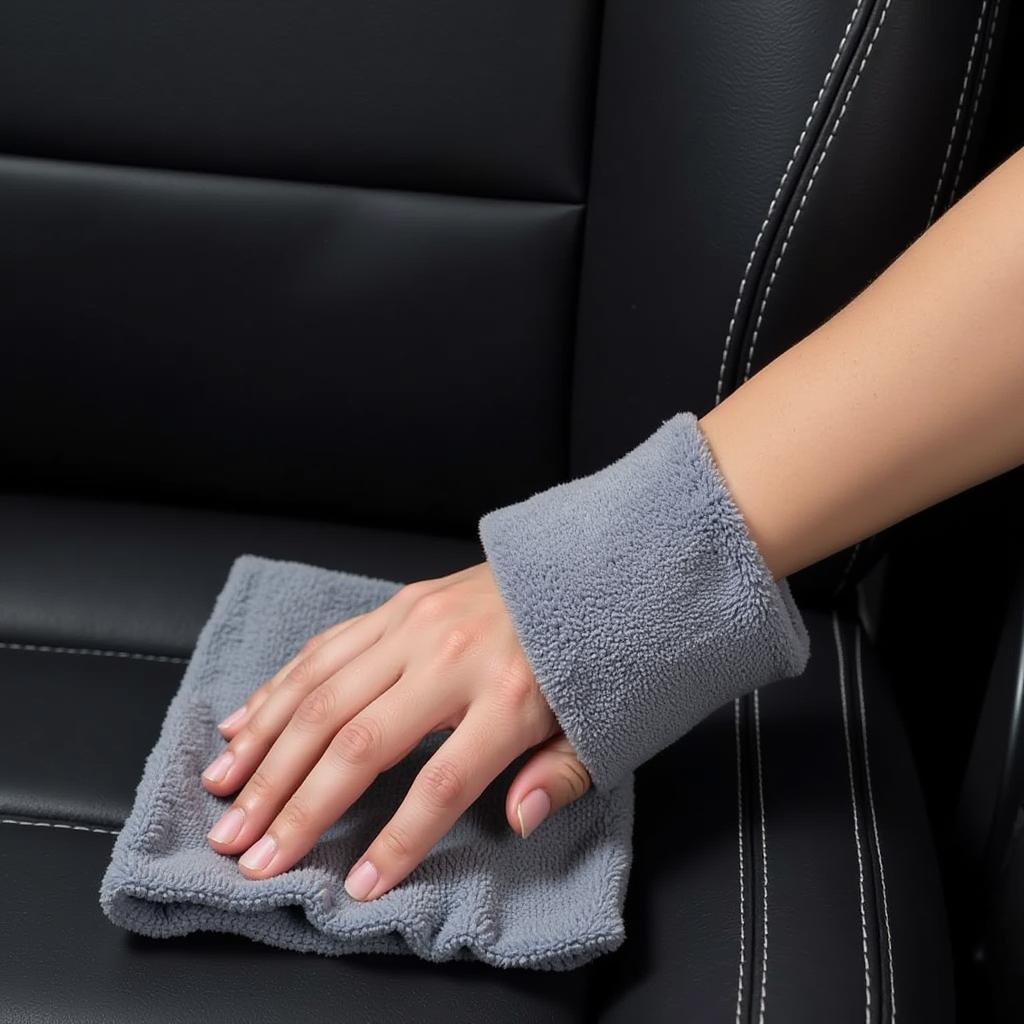Cracked leather car seats can be an eyesore. Learning How To Fix Cracked Leather In Car Myself can save you money and restore your car’s interior. This guide offers a DIY approach to repairing those unsightly cracks and bringing your leather back to life.
Understanding the Crack: Assessing the Damage
Before you begin, it’s essential to identify the type of damage. Is it a surface scratch, a deep crack, or just dryness? This will determine the best approach. Surface scratches might only need a good cleaning and conditioning, whereas deep cracks require fillers and sealants. Knowing the severity of the damage will help you gather the right supplies and avoid unnecessary steps. Don’t underestimate the importance of this step!
Gathering Your Supplies: The Right Tools for the Job
For most cracks, you’ll need a leather repair kit, which typically includes cleaner, conditioner, filler, and sealant. Make sure the kit is specifically designed for car leather. You’ll also need some fine-grit sandpaper, a soft cloth, and possibly a heat gun or hairdryer. If your car’s interior needs a complete makeover you might want to consider [interior car fix near me](https://autotippro.com/interior-car-fix-near me/).
Cleaning and Preparing the Leather: A Crucial First Step
Clean the affected area thoroughly with a dedicated leather cleaner. This will remove dirt and grime that could interfere with the repair process. After cleaning, gently sand the cracked area with fine-grit sandpaper. This creates a better surface for the filler to adhere to. Be careful not to over-sand, as you could damage the leather further.
Applying the Filler: Filling the Gaps
Once the leather is clean and prepped, apply the leather filler to the cracks. Use a spatula or a similar tool to spread the filler evenly and fill the cracks completely. Allow the filler to dry completely according to the manufacturer’s instructions. This usually takes a few hours. If you are having trouble with your car armrest, check out how to fix a car armrest.
Sealing and Finishing: The Final Touches
After the filler has dried, apply the sealant to protect the repair and restore the leather’s finish. This helps prevent future cracking and fading. Use a soft cloth to apply the sealant evenly. Once the sealant dries, apply a leather conditioner to moisturize and protect the leather.
 Applying Leather Conditioner on Car Seat
Applying Leather Conditioner on Car Seat
Maintaining Your Leather: Preventing Future Cracks
Regular cleaning and conditioning are crucial to prevent future cracks. Avoid parking your car in direct sunlight for extended periods and consider using a sunshade. You might be surprised to learn how often you should condition your leather. Even if you don’t see cracks, regular conditioning helps keep the leather supple and prevents it from drying out. Interested in fixing sun-damaged cars? Read more about can you fix sun damage on cars. Or find information on how to fix a sun damaged car.
“Preventive maintenance is key when it comes to car leather. Regular cleaning and conditioning can significantly extend the life of your leather interior,” says renowned auto detailer, Michael Davis.
“Don’t underestimate the power of a good leather cleaner. It’s the foundation for any successful leather repair,” adds Sarah Miller, a leading leather restoration expert.
Conclusion
Fixing cracked leather in your car yourself is a rewarding DIY project. By following these steps and using the right products, you can restore your leather seats and save money. Remember, proper maintenance is key to keeping your leather looking its best. For more information on fixing cracks in your car, visit fix cracks on car.
Contact AutoTipPro at +1 (641) 206-8880 or visit our office at 500 N St Mary’s St, San Antonio, TX 78205, United States for any additional support or inquiries. We’re here to help!
FAQ
- What causes leather car seats to crack? Primarily, sun exposure and dryness.
- Can I use any type of filler on car leather? No, use a filler specifically designed for car leather.
- How often should I condition my leather car seats? Every few months, or more frequently if the leather feels dry.
- Is it cheaper to repair cracked leather myself? Yes, DIY repairs are generally much cheaper than professional services.
- Can I prevent leather cracks from happening in the first place? Regular cleaning, conditioning, and using a sunshade can help prevent cracks.
- What type of sandpaper should I use? Fine-grit sandpaper (2000 grit or higher).
- What if the cracks are very deep? You may need to apply multiple layers of filler.




Leave a Reply